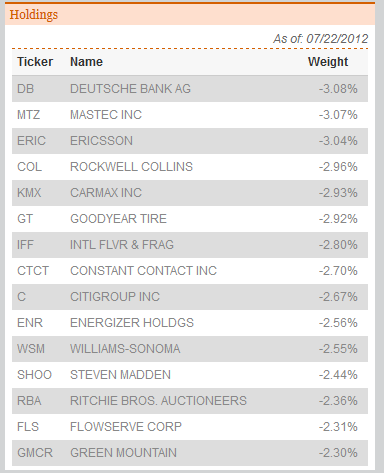Here’s what you need to know about active ETFs
Post on: 16 Март, 2015 No Comment

VictorReklaitis
Markets writer
NEW YORK (MarketWatch) — Active ETFs sound like an oxymoron — like a working vacation or jumbo shrimp.
Most investors know exchange-traded funds as passive, index-based investments that give them a chance to buy into a market, from the S&P 500 SPX, +1.26% to health-care stocks, without worrying the fund manager is going to make a wrong-way pick on the next Enron.
So you might have scratched your head over the term “active” ETFs.
First, these funds are what they sound like: ETFs whose holdings are picked by individuals, rather than simply tracking an index. They have been attracting investor assets and media attention. Even Vanguard, best known for pioneering low-cost indexing, took a step last week toward offering these actively managed products.
So it’s worth asking experts why a regular investor would want to buy an actively managed ETF. Turns out, it’s often for the same reason that investors may buy a like-minded mutual fund — hoping for an edge, whether it’s outperformance or better risk-adjusted returns.
Some investors “don’t want to settle for the market return” and “want to pay for someone to try to beat the market,” says Michael Iachini, managing director of mutual fund and ETF research at Charles Schwab Investment Advisory.
Active ETFs come with some, but not all, of the traits that have helped ETFs outstrip the growth rate of mutual funds. Holders can get prices and trade intraday and, as with an index ETF, there can be tax benefits.
But like mutual fund or hedge funds that are actively managed, they don’t have the rock-bottom expense ratios of the big index ETFs. And there’s a large body of investing research and advice that maintains, whether it’s a mutual fund or ETF, those higher costs are rarely worth it.
“The ETF vehicle doesn’t alter the odds in active vs. passive investing: Over time, most stock-pickers underperform market benchmarks,” MarketWatch columnist John Prestbo noted in a recent column.
Active ETFs and Cubs fans
Industry insiders have talked for several years about when active ETFs will take off, asking, “Are they finally going to blow up?” Iachini says. He agreed that it’s a bit like Chicago Cubs fans hoping for an end to the team’s longstanding championship drought.
“No investors are Cubs fans,” Iachini adds, extending the comparison. In other words, the average investor doesn’t really care that much about whether active ETFs have a breakthrough year.
Are you getting lousy returns from good mutual funds?
Investors, on average, earn far lower returns than the mutual funds they own. Heres how to avoid that fate.
Instead, investors who have taken an active approach involving a manager, rather than a passive, index-tracking strategy, so far have overwhelmingly used mutual funds rather than ETFs. Mutual funds offer “way more choices,” and they have five-year track records that active ETFs generally lack, Iachini notes.
Active stock and bond ETFs had $14.58 billion in assets as of Dec. 31, representing just 0.9% of the $1.67 trillion in U.S. ETFs. Meanwhile, active mutual funds had $10.64 trillion in assets, representing 87% of the $12.29 trillion in U.S. mutual funds, according to data from investment researcher Morningstar.
“There’s a lot more choices on the traditional mutual fund side, but that’s changing over time,” says Noah Hamman, chief executive at active ETFs provider AdvisorShares.
Active ETFs are “definitely in that rapid growth stage,” he adds, pointing to products such as the AdvisorShares Peritus High Yield ETF HYLD, -0.12% which has attracted about $800 million in assets since launching in late 2010. The ETF aims to use a value-focused approach to select bonds. It has an expense ratio of 1.25%, much higher than the 0.09% ratio for the largest ETF, the SPDR S&P 500 ETF SPY, +1.27% but on par with what many other actively managed funds charge.
Hamman draws parallels between these early years for active ETFs and the first few years for the overall ETF industry, which started in January 1993 with the SPDR’s launch .














